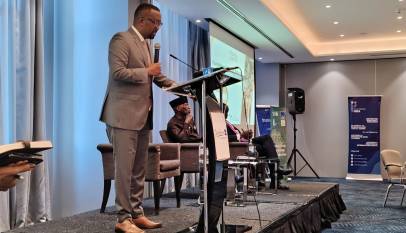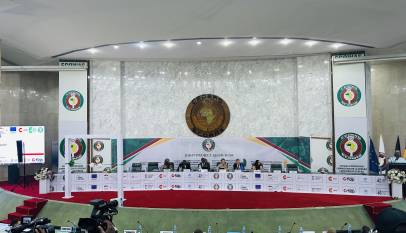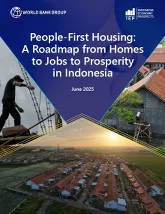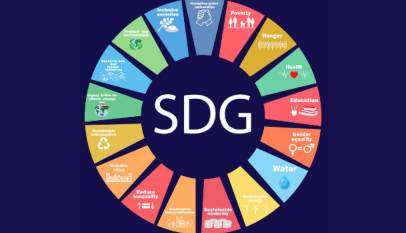OP-ED | Labor migration can aid development. When does it become brain drain? By Msingathi Sipuka
In Africa, where development is unequal and some regions face growing conflict, highly skilled labor is likely to migrate. While this is a plus for receiving countries, the flip side is brain drain in the less developed regions, argues Msingathi Sipuka.

Postcolonial Africa has consistently sought to define a path of development that will bring prosperity to the continent and improve living standards for its citizens.
From the early theorizations of the first generation of post-colonial leaders like Kwame Nkrumah to the Lagos Action Plan of 1980, the New Partnership for Africa’s Development (NEPAD), now the African Union Development Agency (AUDA-NEPAD), and the current Agenda 2063, the common thread has been regional and continental integration.
Indeed, the integration project has been at the center of lifting Africa from the doldrums of global development. Within the integration project, two areas have emerged as the most catalytic and have drawn the most attention from African leaders and policymakers.
The first is the integration of trade within and across the different regional economic communities on the continent. The second, perhaps as a means to complement the idea of trade integration, is the free movement of labour across the continent.
At varying levels, the trade integration agenda has taken shape across the different regional economies. Notwithstanding, the level of intra-continental trade remains at relatively low levels when compared with that of other continents.
The picture is even bleaker when you consider the contribution of Africa to global trade. This reality is driven by a multiplicity of factors, ranging from poor infrastructure connectivity between countries to the insertion of Africa into the global economy, which has seen Africa maintain its place as an exporter of primary products with a low manufacturing base and inefficiencies at border posts.
AFCFTA and the free movement of labour
The introduction of the African Continental Free Trade Area (AFCFTA) has elevated the trade integration project to new heights. The promise of an African market that connects 1.3 billion people across 55 countries with a combined gross domestic product (GDP) valued at US$3.4 trillion has created a new euphoria about the prospects for Africa.
As the AFCFTA takes root and trade starts to happen under the protocols of the agreement, naturally, the eye has shifted to the critical enablers that will lead to the success of the free trade area. Together with infrastructure and digital connectivity, the free movement of labor across the continent has emerged as a hot topic.
Many of the voices that have weighed in on the need to open up the continent’s borders to facilitate the free movement of labor have cited the traditional benefits of labor migration, namely, ensuring that skills are readily available to African member states. Indeed, the logic that a shortage of skill in one country could easily be filled by excess supply of the same skill from a different country is sound.
This can only happen when the conditions exist for labor to move without constraints. For the implementation of the AFCFTA, with its strong focus on building the productive capabilities and manufacturing sectors of countries, moving skills across the continent seems to be the way to go. Over the past century, national, regional, continental, and global labor migration flows have given us sufficient evidence to understand migration patterns and their drivers.
Fundamentally, the primary driver of labor migration is economics. People move away from their countries in search of better economic opportunities. Countries with relatively lower levels of economic development (offering lower wages) are prone to higher outflows of labor to countries with higher levels of development (offering higher wages). Often, this is what is referred to as the wage differential between countries.
Key drivers of migration
Economics is one driver; the second, which has much relevance on the African continent, is security. Increasing levels of conflict and the growing insecurity of citizens are bound to result in outflows of people in search of both security and opportunities to earn income. Labor will move from less secure to more secure countries or regions.
Interestingly, in both instances, it will be the highly skilled components of labor that migrate first and successfully. It goes without saying that the drain of highly skilled labor from less developed or conflicting countries will only perpetuate the conditions in those countries.
Across regions or areas where the wage differentials are relatively low and where workers can expect to earn similar wages, complemented by stable institutions and security, the idea of free movement of labor seems more plausible. In these conditions, the movement of labor will only be at the margins, where there are actual shortages of skills. For example, the free movement of labor in the EU started with roughly 12 to 15 countries, all in Western Europe.
The wages in these countries were relatively similar, resulting in marginal movements. With the EU’s expansion of the free movement of labor to eastern and southern Europe, where wages are lower than in the West, the rate and patterns of labor movement have shifted dramatically. Western Europe has seen a much greater inflow from both the south and the east, with a resultant loss of critical skills in the southern and eastern regions.
As the African continent considers the free movement of labor, it is in its interest to think hard and carefully about how it engages in this crucial policy issue. Africa is diverse in its economic development, with much of the continent still classified as underdeveloped. This general underdevelopment coexists with pockets of industrial development and economic diversification, which offer better opportunities and wage rates.
In an Africa that is unequal in development, with growing conflict in specific countries and regions, the tendency will be for labor, in particular the highly skilled, to migrate towards the more developed centers of the continent. For these receiving countries, this will positively contribute to their skill base and assist in further driving development.
The flip side will be the brain drain in the less developed regions and countries. A system of free movement of people implemented in the current African context is likely to work against the continent’s less developed regions and countries instead of working for them. It is likely to bring the required labor to the developed parts of the continent while creating enclaves of underdevelopment in the less developed.
Addressing the problem
So, what options exist for Africa on this sensitive but crucial policy issue? Certainly, the answer is not to curtail the migration of labor; that is like trying to stop nature. People have always moved across different regions and will always do so.
The first logical step is to bring the continental economy to some form of economic convergence across regions and member states.
The second is to intensify the efforts to silence the guns. Africa has to lower the wage differential between its countries and end conflicts. That will ensure that the opening up of borders does not privilege the developed economies and works to the detriment of the less developed. But this is a long-term game. We will not realize these two objectives immediately. So, how should we respond to the movement of labor in the immediate?
The answer lies in a coordinated and planned labor migration approach on the continent. Understanding what skills are needed and developing instruments to deploy based on those needs. In this regard, institutions responsible for driving the continent’s development across sectors and regional economic communities become vital.
The African Union will have to place this issue at the center of its policy agenda and develop the necessary infrastructure for negotiation among countries. Fortunately, the foundational institutional elements are already in existence but require strengthening. The African Union Labor Migration Advisory Committee has been set up to provide guidance on issues related to the labor migration of Africans within the continent and beyond.
Continental organizations such as AUDA-NEPAD are already building partnerships to develop innovative ideas that can strengthen collaboration among counties to facilitate the movement of labor by need for supply. The African Critical Skills Bank initiative is an example of ongoing thinking in this area.
The continental development agency has partnered with the African Export-Import Bank to develop a platform where countries can trade in skills based on their needs and excess supply. While the skills bank is still under development, it demonstrates how continental bodies can drive the required innovation in the labor movement so that it promotes development across counties.
One argument that may be raised against this view is that remittances have grown to become the greatest share of development finance for developing countries. Therefore, curtailing migration from countries in distress from an economic and security perspective will deprive them of the much-needed financial resources they currently get from remittance flows.
But what long-term value do such remittance flows bring to a country when its best minds are dispersed across the continent and the world?
What long-term development impact do these resources have in the context of a brain drain?
Certainly, an uncoordinated approach to the free movement of labor on the continent in the immediate future has the great potential to deepen the chasms of inequality between countries and regions, working against Agenda 2063.
Dr Msingathi Sipuka is Chief of Staff at the African Union Development Agency-NEPAD (AUDA-NEPAD). However, the views expressed in this opinion article, originally published in the Habari newsletter, do not represent the views of AUDA-NEPAD or African Newspage.














